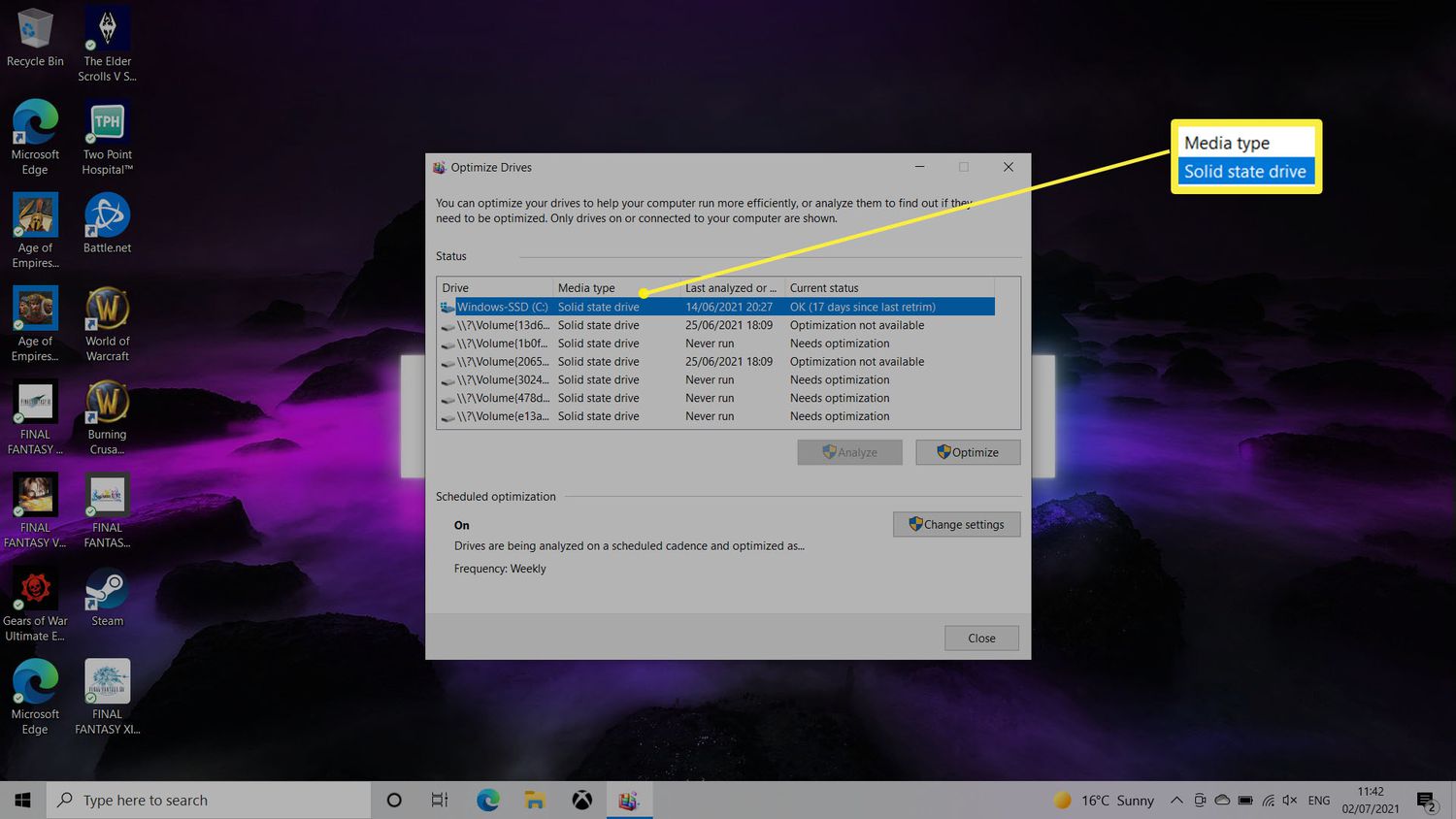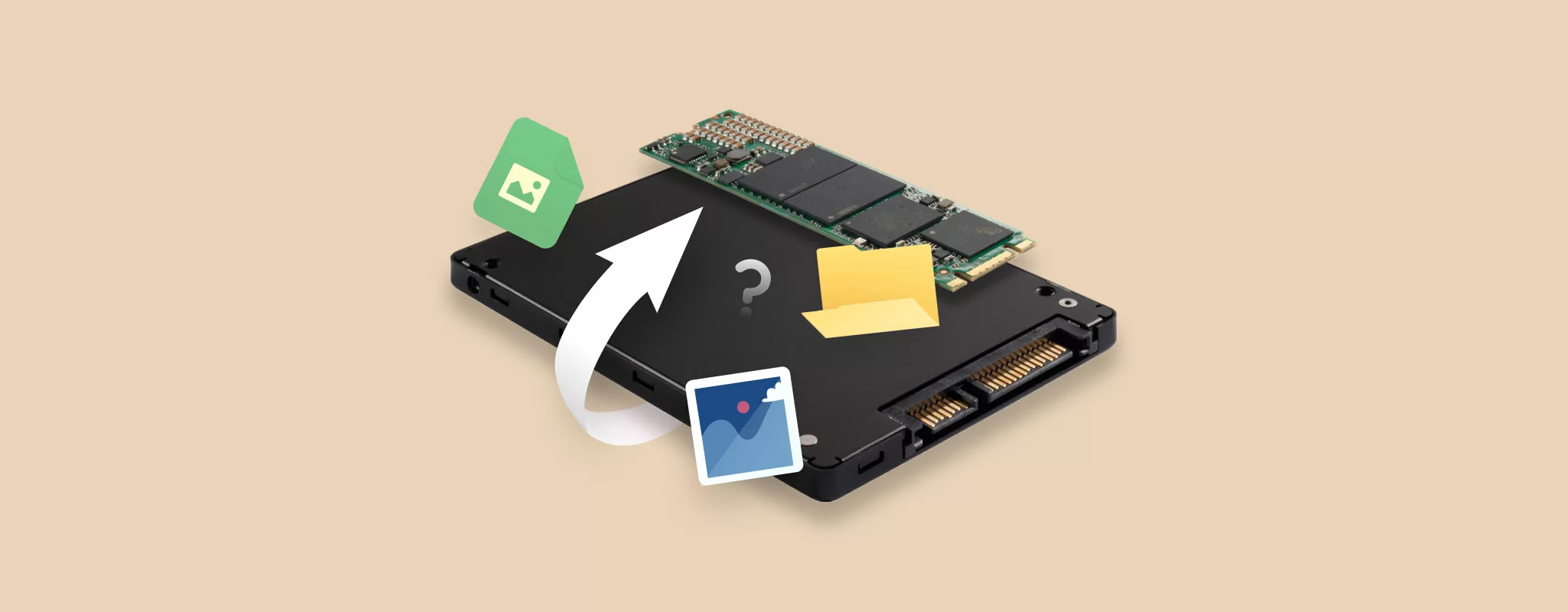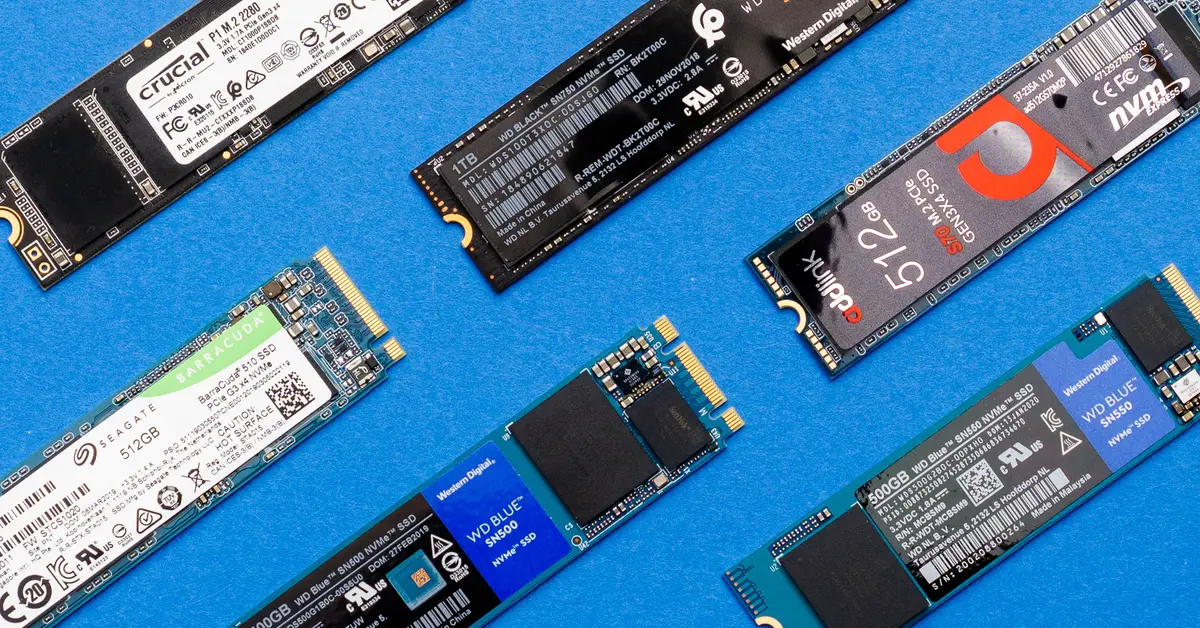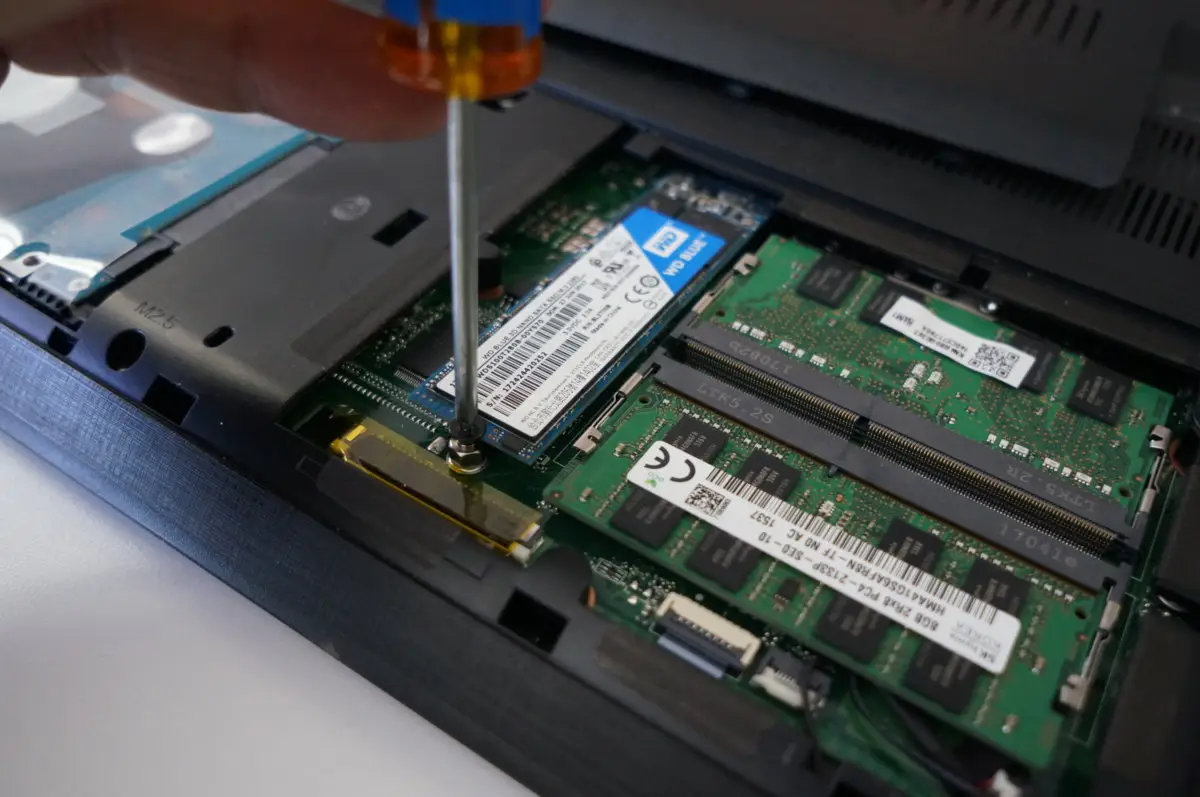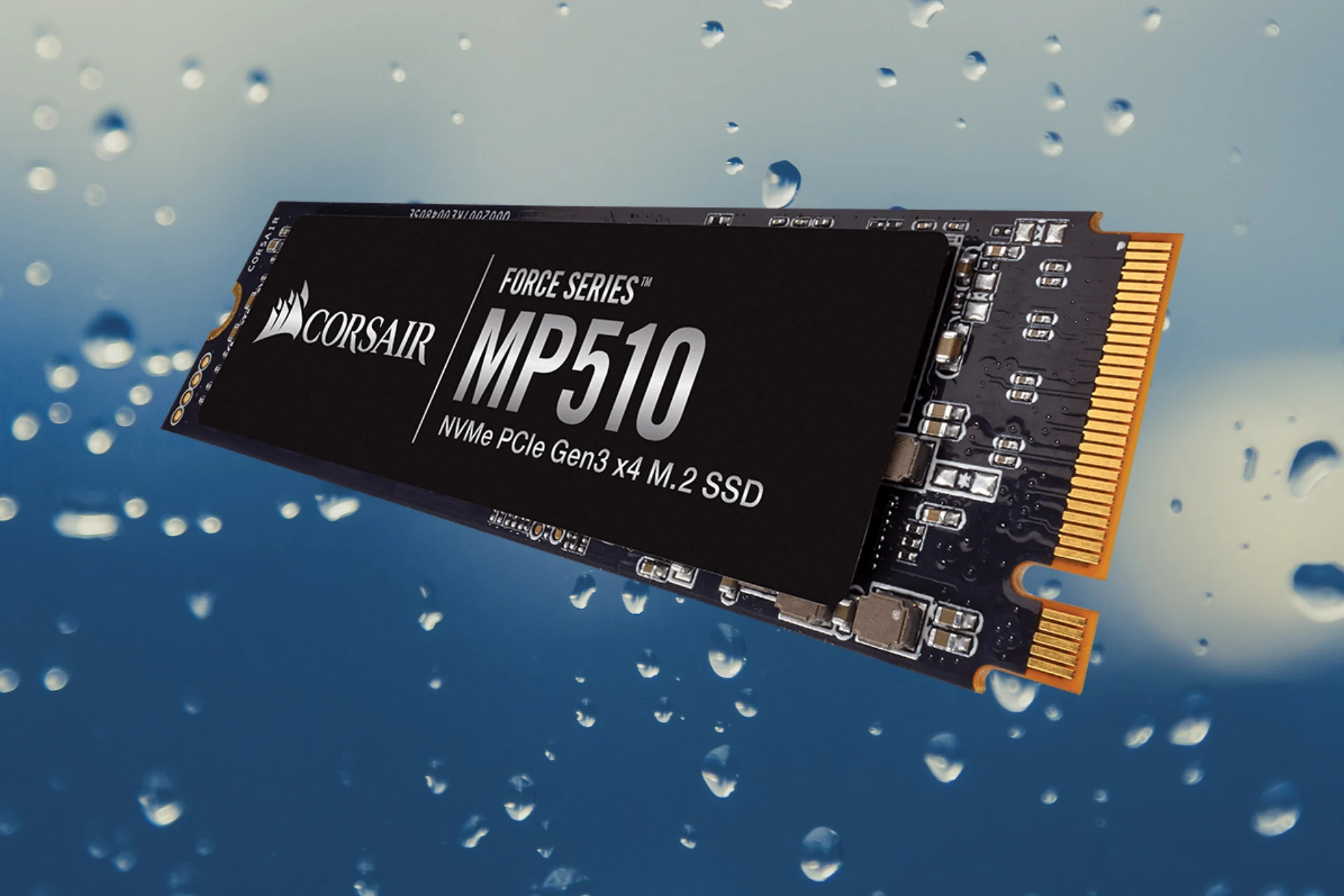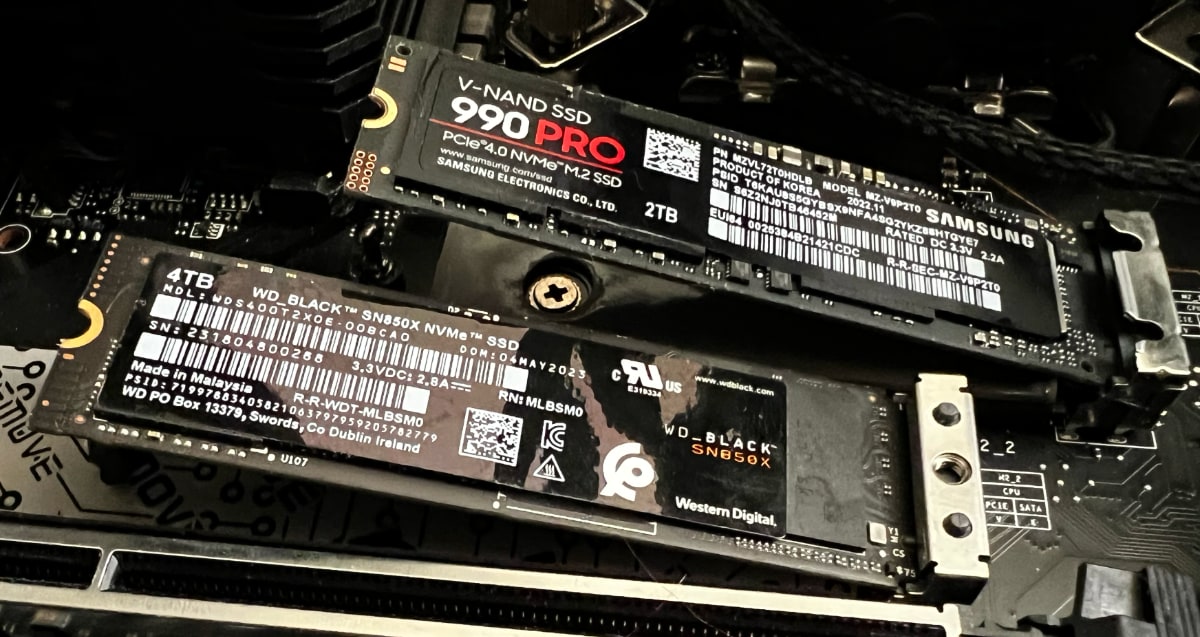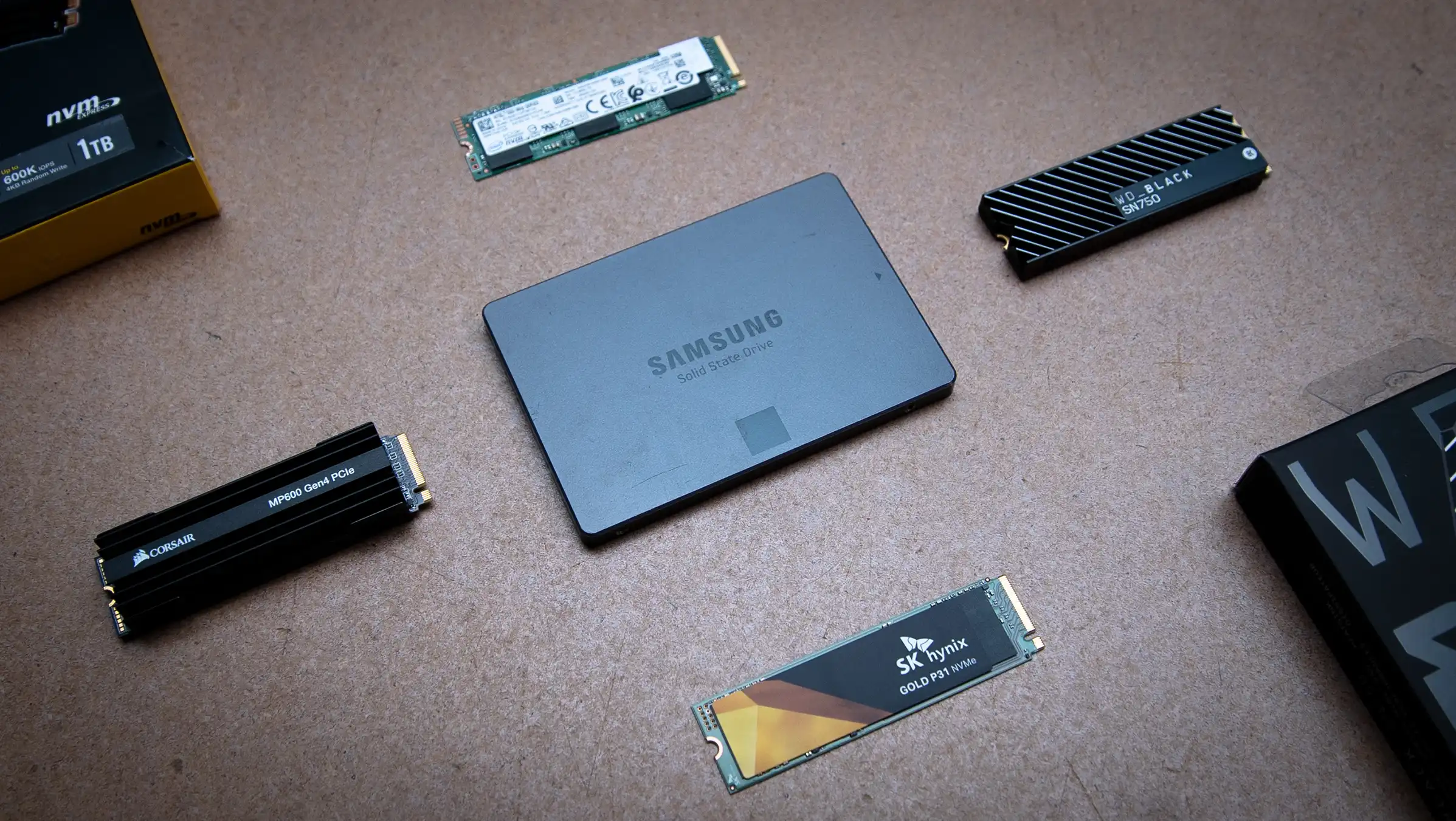Introduction
Welcome to this comprehensive guide on how to check if your SSD (Solid State Drive) is healthy. As SSDs become increasingly popular for their speed and durability, it becomes crucial to regularly monitor the health and performance of these storage devices. By ensuring the proper functioning of your SSD, you can prevent data loss, improve system performance, and extend its lifespan.
An SSD consists of electronic components with no moving parts, unlike traditional hard disk drives (HDDs). While this makes SSDs more resistant to physical damage, they can still experience wear and tear over time. Monitoring the health of your SSD allows you to detect potential issues early on and take proactive measures to maintain optimal performance.
In this article, we will explore various methods to test and monitor the health of your SSD. We will discuss how to check SMART data, use vendor-specific tools, run built-in Windows diagnostic tools, and perform read/write speed tests. Additionally, we will delve into the importance of using third-party software, enabling TRIM support, and keeping your SSD firmware updated.
Whether you are a professional user who heavily relies on your SSD for demanding tasks or an everyday computer user who wants to ensure their storage device is running smoothly, this guide will provide you with the necessary knowledge and tools to assess the health of your SSD.
It’s important to note that while these methods can indicate potential issues with your SSD, they do not guarantee absolute accuracy. If you suspect severe problems or encounter persistent performance issues, it’s advisable to seek professional assistance.
Testing SSD Health
Ensuring the health of your SSD is vital to prevent data loss and maintain its performance. The following methods will help you assess the condition of your SSD:
1. Check SMART Data
SMART (Self-Monitoring, Analysis, and Reporting Technology) is a built-in feature in modern SSDs that monitors various parameters related to the drive’s health and performance. SMART data provides valuable insights, such as the number of bad sectors, temperature fluctuations, and overall wear level. You can access SMART data using various third-party SSD monitoring software or system utilities.
2. Use Vendor-Specific Tools
Many SSD manufacturers provide proprietary software designed specifically for their drives. These tools offer more detailed information about the health and performance of your SSD, including firmware updates, wear leveling statistics, and drive health indicators. Visit your SSD manufacturer’s official website to find and download the appropriate tool for your specific model.
3. Run Built-In Windows Diagnostic Tools
Windows operating system offers built-in tools to scan and diagnose storage devices. To access these tools, open the Command Prompt as an administrator and run the “chkdsk” command with the appropriate parameters. These tools can detect and repair file system errors, bad sectors, and other issues that may affect your SSD’s performance.
4. Perform Read/Write Speed Tests
Performing read and write speed tests on your SSD can help determine its current performance level. Various benchmarking tools, such as CrystalDiskMark or AS SSD Benchmark, allow you to measure the sequential and random read/write speeds of your SSD. Compare the results with the specifications provided by the manufacturer to ensure your SSD is performing within the expected range.
Regularly testing the health and performance of your SSD using these methods will provide you with crucial information about its condition. By identifying any potential issues early on, you can take appropriate actions to optimize its performance and prevent data loss.
Check SMART Data
One of the most effective ways to assess the health of your SSD is by checking its SMART (Self-Monitoring, Analysis, and Reporting Technology) data. SMART provides detailed information about the drive’s performance and health indicators.
To access SMART data, you can use various third-party software or utilities specifically designed for this purpose. These programs retrieve and display the SMART data of your SSD, giving you insights into different parameters that can indicate potential issues.
Here are some key SMART attributes to look out for:
- Reallocated Sector Count: This attribute shows the number of sectors that were moved to the spare area due to read or write errors. A high count may indicate a failing or deteriorating SSD.
- Uncorrectable Sector Count: Similar to the reallocated sector count, this attribute reveals the number of sectors that could not be corrected despite multiple attempts. A high count may suggest an SSD nearing its end of life.
- SSD Life Left: This attribute provides an estimate of the remaining lifespan of your SSD, based on factors like the total bytes written and the wear leveling mechanism. It is crucial to monitor this attribute to determine whether your SSD requires replacement or additional maintenance.
- Temperature: SSDs generate heat during prolonged usage, so monitoring the temperature is essential. Excessive heat can impact performance and shorten the lifespan of the drive.
- Power-On Hours: This attribute indicates the total number of hours the SSD has been powered on. Monitoring this attribute helps assess the overall usage and longevity of the drive.
By regularly checking the SMART data of your SSD, you can identify any signs of deterioration or potential problems. If you notice any significant changes or concerning values in the SMART attributes, it may be advisable to backup your data and consider seeking professional assistance or replacing the SSD.
Remember that interpreting SMART data requires some technical knowledge, and it is always recommended to refer to the manufacturer’s documentation or consult with professionals in case of any doubts or concerns.
Use Vendor-Specific Tools
In addition to checking SMART data, another effective method to assess the health of your SSD is by utilizing the vendor-specific tools provided by the manufacturer. These tools are designed specifically for their SSD models and offer more detailed information about the drive’s performance and health.
Here are a few benefits of using vendor-specific tools:
- Detailed Drive Information: Vendor-specific tools provide comprehensive details about your SSD, such as firmware version, model number, and drive capacity. This allows you to ensure that your SSD is running on the latest firmware, which can improve compatibility and performance.
- Diagnostic Tests: Vendor tools often include built-in diagnostic tests that assess the overall health and functionality of your SSD. These tests can help detect any potential issues, such as bad sectors or data corruption, allowing you to take appropriate actions to resolve them.
- Performance Optimization: Some vendor-specific tools offer optimization features that can enhance the performance of your SSD. These features may include drive optimization, garbage collection, or TRIM command execution, which helps maintain the efficiency and longevity of the SSD.
- Firmware Updates: Keeping your SSD’s firmware up to date is crucial for optimal performance, compatibility, and security. Vendor tools often provide the ability to check for firmware updates and perform the update process seamlessly.
To access vendor-specific tools, visit the official website of your SSD manufacturer and search for the appropriate software for your specific model. Download and install the tool on your system, then run it to gather detailed information about your SSD and perform diagnostic tests or firmware updates as needed.
It’s important to note that while vendor-specific tools offer valuable insights and functionality, they may not be available for all SSD models or operating systems. In such cases, relying on other general-purpose SSD monitoring tools or the built-in features of your operating system can still provide useful information about the health of your SSD.
By utilizing the vendor-specific tools provided by the manufacturer, you can gain deeper insights into the performance and health of your SSD. Regularly using these tools and keeping your firmware up to date will help ensure that your SSD is operating at its best performance and extend its overall lifespan.
Run Built-In Windows Diagnostic Tools
If you’re using a Windows operating system, you have access to built-in diagnostic tools that can help analyze and resolve potential issues with your SSD. These tools can effectively assess the health and performance of your drive, allowing you to take appropriate actions if necessary.
Here are a few built-in Windows diagnostic tools that can be useful:
- Check Disk (chkdsk): The Check Disk utility is a command-line tool that checks the file system for errors and fixes them if possible. It can also detect and repair bad sectors on your SSD. To run Check Disk, open the Command Prompt as an administrator and type “chkdsk [drive letter]: /f /r”. Replace [drive letter] with the relevant drive letter of your SSD.
- Windows Error Checking: Also known as the Error Checking utility, this tool provides a graphical interface to scan and fix errors on your SSD. To access it, right-click on your SSD drive in File Explorer, select “Properties,” go to the “Tools” tab, and click on “Check” in the “Error checking” section.
- Performance Monitor: The Performance Monitor tool allows you to monitor the performance of your SSD in real-time. It provides details about various performance metrics, such as read and write speeds, response time, and disk usage. To launch Performance Monitor, press Windows key + R, type “perfmon” in the Run dialog, and press Enter.
By running these built-in Windows diagnostic tools, you can identify and resolve common issues that may impact the performance and health of your SSD. This can help improve the overall stability and functionality of your SSD and prolong its lifespan.
It’s important to note that for more advanced diagnostic and repair capabilities, you may need to rely on specialized third-party software or the vendor-specific tools provided by your SSD manufacturer. These tools often offer more comprehensive functionality and insights into the health and performance of your SSD.
Regularly running the built-in Windows diagnostic tools, combined with other testing methods, will provide you with a comprehensive assessment of your SSD’s health. By staying proactive and addressing any potential issues promptly, you can ensure that your SSD continues to perform optimally and safeguard your data effectively.
Perform Read/Write Speed Tests
To effectively evaluate the health and performance of your SSD, performing read and write speed tests is an essential step. These tests can help you gauge how well your SSD is performing in terms of data transfer rates and overall responsiveness.
Here are a few common tools and methods to conduct read/write speed tests on your SSD:
- CrystalDiskMark: CrystalDiskMark is a popular benchmarking tool that measures the sequential and random read/write speeds of your SSD. It provides detailed information about various performance parameters, including data transfer rates and input/output operations per second (IOPS).
- AS SSD Benchmark: AS SSD Benchmark is another widely used tool specifically designed for SSDs. It evaluates your SSD’s read/write performance, access time, and overall score. It also provides a simple interface with easy-to-understand results.
- Copying Large Files: Another way to assess your SSD’s performance is by copying large files from one location to another on your drive. This test measures the actual transfer speed of files, simulating real-world usage scenarios.
When conducting read/write speed tests, it’s important to ensure that your SSD is not under heavy load from other processes or applications. Close any unnecessary applications and background processes to obtain accurate results.
After performing the speed tests, compare the obtained results with the specifications provided by your SSD manufacturer. If the actual speeds are significantly lower than the expected values or there is a notable decline in performance compared to previous tests, it may indicate a potential issue with your SSD.
Keep in mind that factors such as the age of your SSD, the type of data being transferred, and the available free space on the drive can influence the results. As SSDs age, their performance may naturally degrade over time due to factors like wear leveling. However, a severe drop in performance may warrant further investigation or maintenance.
Regularly conducting read/write speed tests can help you monitor the performance consistency of your SSD and identify any significant changes in its speed over time. By staying proactive and addressing any performance decline promptly, you can ensure that your SSD continues to deliver optimal performance and reliability.
Monitoring SSD Health
In addition to conducting periodic tests, it is important to monitor the health of your SSD on an ongoing basis. This proactive approach allows you to detect and resolve potential issues before they escalate. Here are some effective methods for monitoring the health of your SSD:
1. Use Third-Party Software
There are various third-party software applications available that specialize in monitoring the health and performance of SSDs. These tools provide real-time information about crucial parameters such as temperature, read/write speeds, drive health status, and SMART attribute values. They often offer customizable alerts to notify you of any anomalies or critical changes in your SSD’s health.
2. Enable TRIM Support
TRIM is a feature that helps improve SSD performance and longevity by optimizing data storage on the drive. Enabling TRIM support allows your SSD to communicate with the operating system and efficiently manage deleted data. By regularly issuing TRIM commands, you can prevent performance degradation caused by outdated or unnecessary data still occupying SSD space.
3. Keep Firmware Updated
SSD manufacturers often release firmware updates to address performance issues, improve compatibility, and fix bugs or vulnerabilities. It is essential to check for firmware updates regularly and apply them as recommended by the manufacturer. Firmware updates can not only enhance your SSD’s performance but also ensure that it remains protected from potential security risks.
By actively monitoring the health of your SSD, you can maintain optimal performance and prevent critical issues. Regularly checking temperature, read/write speeds, and SMART attributes using third-party software helps you identify any anomalies before they cause significant damage or failure. Enabling TRIM support and keeping your firmware up to date are crucial steps in ensuring long-term reliability and efficiency of your SSD.
Remember that while these monitoring methods are effective, they should not replace regular backups of your important data. Even with a healthy SSD, unexpected events such as power outages or accidental file deletions can lead to data loss. Therefore, it is always advisable to have a robust backup strategy in place to safeguard your valuable data.
Use Third-Party Software
When it comes to monitoring the health and performance of your SSD, utilizing third-party software can provide you with valuable insights and real-time data. These specialized tools are designed specifically for SSD monitoring and offer a range of features to ensure the optimal functionality of your drive.
Here are some benefits of using third-party software for monitoring your SSD:
Real-Time Monitoring:
Third-party software provides real-time information about crucial parameters such as temperature, read/write speeds, power-on hours, and SSD health status. You can track these metrics and identify any abnormalities or performance fluctuations that may require attention.
SMART Attribute Monitoring:
SSD monitoring tools allow you to view and interpret the SMART (Self-Monitoring, Analysis, and Reporting Technology) attributes of your SSD. You can access detailed information about attributes like drive temperature, spin-up retries, error rates, and power cycles. By monitoring these attributes, you can identify potential issues before they cause significant damage to your SSD.
Alerts and Notifications:
Many third-party SSD monitoring tools offer customizable alerts and notifications. You can set thresholds for specific parameters, such as high temperature or critical SMART attribute values. When a threshold is crossed, you will be promptly notified, allowing you to take immediate action to prevent any adverse effects on your SSD.
Performance Benchmarking:
SSD monitoring software often includes performance benchmarking tools that allow you to measure the read/write speeds, IOPS (Input/Output Operations Per Second), and access times of your SSD. These tests provide a baseline for comparison, enabling you to track performance improvements or declines over time.
Drive Health Analysis:
Third-party tools can analyze the overall health of your SSD by considering various factors, including wear leveling, reported errors, and the estimated remaining lifespan of the drive. This analysis provides valuable insights into the current state of your SSD and helps you make informed decisions regarding maintenance or replacement.
There are several reputable third-party SSD monitoring tools available, such as CrystalDiskInfo, Samsung Magician, and Kingston SSD Manager. Research and choose the software that is compatible with your SSD model and preferred operating system.
By utilizing third-party SSD monitoring software, you can actively track the health and performance of your SSD. Regularly analyzing real-time data, interpreting SMART attributes, and leveraging the benchmarking tools provided will assist you in maximizing the longevity and efficiency of your SSD.
Enable TRIM Support
Enabling TRIM support is an important step in optimizing the performance and longevity of your SSD. TRIM, a feature supported by most modern operating systems, helps the SSD maintain optimal performance by efficiently managing the storage of data and minimizing write amplification.
Here are some key aspects to understand about TRIM:
How TRIM Works:
When you delete a file from your SSD, the operating system sends a TRIM command to the SSD to inform it that the deleted data can be marked as invalid. The SSD then proceeds to free up the corresponding space for future use. Enabling TRIM ensures that your SSD recognizes deleted data as unallocated and can effectively manage its storage space.
Benefits of Enabling TRIM:
By enabling TRIM support, you can experience several benefits, including:
- Improved Write Performance: TRIM helps maintain consistent write speeds on your SSD by reducing the performance degradation caused by outdated or unnecessary data occupying storage cells. This optimization results in faster write operations and overall improved performance.
- Enhanced Longevity: When TRIM is enabled, the SSD can proactively manage the allocation of data to avoid excessive write operations on the same cells. This helps reduce wear and tear, prolonging the lifespan of your SSD.
Enabling TRIM Support:
Enabling TRIM support is a straightforward process. Here’s how to do it:
- Windows: TRIM is typically enabled by default on Windows systems. You can verify its status by opening the Command Prompt as an administrator and running the command “fsutil behavior query DisableDeleteNotify”. If the result is “DisableDeleteNotify = 0”, TRIM is enabled. If it’s set to “DisableDeleteNotify = 1”, you can enable TRIM by running the command “fsutil behavior set DisableDeleteNotify 0”.
- macOS: TRIM is enabled by default on macOS. You can confirm its status by opening the Terminal and running the command “sudo trimforce enable”. Follow the on-screen instructions to enable TRIM and restart your system if prompted.
- Linux: TRIM support is typically built into most Linux distributions and is automatically enabled. You can verify its status by running the command “sudo systemctl status fstrim.timer”.
Enabling TRIM support is essential to maintain the optimal performance and longevity of your SSD. By allowing your SSD to efficiently manage data storage and prevent write performance degradation, TRIM helps ensure that your SSD operates at peak performance levels throughout its lifespan.
Keep Firmware Updated
Keeping the firmware of your SSD up to date is crucial for ensuring optimal performance, compatibility, and reliability of your drive. Firmware updates, released by SSD manufacturers, address various issues, including performance enhancements, bug fixes, and security vulnerabilities.
Here are some key reasons why you should keep your SSD firmware updated:
Performance Improvements:
SSD firmware updates often include performance optimizations that can enhance the overall speed and responsiveness of your drive. These updates may include improved algorithms, error correction mechanisms, and better overall efficiency, resulting in a better user experience.
Compatibility with New Technologies:
Firmware updates ensure that your SSD remains compatible with newer technologies and industry standards. As new features and advancements emerge, manufacturers release firmware updates to ensure proper functionality and compatibility with the latest hardware and software platforms.
Bug Fixes and Stability:
Firmware updates address known bugs and stability issues that users may encounter. These issues can impact the reliability and performance of your SSD, so it is crucial to apply the latest firmware updates to rectify any existing problems and prevent potential issues in the future.
Security Enhancements:
Firmware updates often include security patches that protect your SSD from potential vulnerabilities and exploits. Just like any other software or firmware, SSDs can be subject to security threats, and regular firmware updates help ensure that your SSD remains secure and protected.
Most SSD manufacturers provide official firmware updates on their websites, often accompanied by instructions for the updating process. It is essential to follow the instructions carefully, as improper firmware updates can potentially cause issues or even render your SSD unusable.
Before initiating a firmware update, ensure that you have backed up any important data stored on the SSD. Though firmware updates are generally safe, it is always a good practice to have a backup as a precautionary measure against any unforeseen circumstances.
Regularly checking for firmware updates and applying them as recommended by the manufacturer is vital for maintaining the optimal performance, compatibility, and security of your SSD. By keeping the firmware updated, you can ensure that your SSD operates smoothly and efficiently, leveraging the latest advancements and improvements made available by the manufacturer.
Conclusion
Monitoring the health and performance of your SSD is crucial for ensuring its longevity and optimal functionality. By following the methods outlined in this guide, you can effectively assess the condition of your SSD and take necessary actions to maintain its performance.
Testing your SSD health involves various steps, including checking SMART data, utilizing vendor-specific tools, running built-in Windows diagnostic tools, and performing read/write speed tests. These methods provide valuable insights into the overall health, performance, and potential issues that your SSD may be experiencing.
In addition to conducting tests, monitoring your SSD health is an ongoing process. Using third-party software, enabling TRIM support, and keeping your firmware updated are essential practices to ensure long-term reliability and optimal performance of your SSD.
Remember, while these methods can help you identify potential issues and optimize the performance of your SSD, they do not guarantee absolute accuracy. If you encounter persistent performance problems or suspect severe issues, it is recommended to seek professional assistance.
By regularly monitoring and maintaining the health of your SSD, you can have peace of mind knowing that your data is safe and your drive is performing at its best. Stay proactive, keep your SSD firmware up to date, and take necessary steps to address any issues promptly. This way, you can maximize the lifespan and efficiency of your SSD, ensuring a smooth and reliable computing experience.







